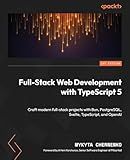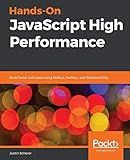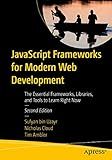Best Tools for Svelte Development to Buy in December 2025

Full-Stack Web Development with TypeScript 5: Craft modern full-stack projects with Bun, PostgreSQL, Svelte, TypeScript, and OpenAI



Hands-On JavaScript High Performance: Build faster web apps using Node.js, Svelte.js, and WebAssembly



JavaScript Frameworks for Modern Web Development: The Essential Frameworks, Libraries, and Tools to Learn Right Now


To conditionally render content in Svelte, you can use the {#if} block statement. Here's an example of how to do it:
{#if showContent}
In the above code, a boolean variable showContent is declared with an initial value of true. The {#if} block statement is used to conditionally render content based on the value of showContent. If showContent is true, the <div> with the text "This content will be shown if showContent is true." will be rendered.
You can also include an {:else} block statement to specify content to be rendered when the condition is false. For example:
{#if showContent}
In this case, since showContent is false, the <div> with the text "This content will be shown if showContent is false." will be rendered.
Remember to update the value of showContent appropriately in your script to dynamically control the conditional rendering.
How to conditionally render content based on the result of an API call in Svelte?
In Svelte, you can conditionally render content based on the result of an API call by using reactive statements and conditional blocks.
Here's a step-by-step guide on how to achieve this:
Step 1: Set up the API call and store the result
- Create a reactive statement using the onMount lifecycle method or by using a reactive variable like $:
- Inside the statement, make the API call and store the result in a variable. For example:
import { onMount } from 'svelte';
let apiResult;
onMount(async () => { const response = await fetch('your-api-url'); apiResult = await response.json(); });
Step 2: Render different content based on the result
- Use the {#if} block to conditionally render content based on the apiResult variable.
- Inside the block, display the content you want to show when the API call is successful.
- Optionally, handle the loading and error state using the {#await} and {#catch} blocks respectively.
- For example:
{#if apiResult}
In the example above, if apiResult is undefined, it means the API call is still loading, so the loading state is shown. If apiResult is false, it means there was an error in fetching the data, so the error state is shown. Otherwise, the content to be displayed when the API call is successful is shown.
Make sure to adapt this example to fit the specifics of your use case, such as handling different response shapes or error conditions.
What is the difference between {#if ...} and {#each ...} in conditional rendering in Svelte?
In Svelte, {#if ...} and {#each ...} are used for conditional rendering, but they have different purposes.
- {#if ...} The {#if ...} block is used to conditionally render a section of markup based on a boolean expression. The block will be rendered only if the expression evaluates to a truthy value. If the expression is falsy, the block will be removed from the rendered output entirely. When the expression switches from truthy to falsy (or vice versa), Svelte efficiently updates the DOM to reflect the change. It is commonly used for rendering components or sections of the UI conditionally.
Example:
{#if loggedIn}
- {#each ...} The {#each ...} block is used for iterating over an array-like or iterable object and rendering its elements. It creates a block for each item in the array, providing access to the current item and its index. It is commonly used when you want to render a list of items dynamically. If the array is empty or null, the block will not be rendered. When the array changes (items are added, removed, or modified), Svelte efficiently updates the DOM to reflect the changes only for the affected elements.
Example:
In summary, while {#if ...} is used for rendering a block conditionally based on a single value, {#each ...} is used for rendering a block repeatedly based on the elements of an array or iterable.
How to render different components based on a condition in Svelte?
To render different components based on a condition in Svelte, you can make use of the if block.
Here's an example:
{#if condition} {:else} {/if}
In the above code, the Component1 will be rendered if the condition is true. Otherwise, the Component2 will be rendered.
You can also use the each block along with the if condition to render multiple components conditionally inside a loop. Here's an example:
{#each data as item} {#if item.condition} {/if} {/each}
In this example, the SomeComponent will be rendered for each item in the data array only if the condition is true for that particular item.
Remember to use else if and else statements if you have multiple conditions to check.
{#if condition1} {:else if condition2} {:else} {/if}
In this case, the components will be rendered based on the order of the conditions. If condition1 is true, Component1 will be rendered. If condition2 is true and condition1 is false, Component2 will be rendered. Otherwise, Component3 will be rendered.
How to show content only when a specific event occurs in Svelte?
In Svelte, you can conditionally render content based on a specific event using the {#if} block.
Here's an example of showing content only when a specific event occurs:
Show Content
{#if showContent}
In this example, we have a boolean variable showContent initially set to false. When the button is clicked (on:click={handleClick}), it triggers the handleClick function which sets showContent to true. The content inside the {#if} block will be rendered only when showContent is true.
How to conditionally render a template block in Svelte?
In Svelte, you can conditionally render a template block using the {#if} directive.
Here's how you can conditionally render a template block in Svelte:
{#if showBlock} This block is conditionally rendered. {/if}
In the above code, the <div> block will be rendered if the showBlock variable is true. Otherwise, it will be skipped.
You can also include an {:else} block to render something when the condition is false:
{#if showBlock} This block is conditionally rendered. {:else} This block is rendered when the condition is false. {/if}
In this case, if showBlock is true, the first <div> block will be rendered; otherwise, the second <div> block will be rendered.
You can use any JavaScript expression in the condition, including variables, boolean operators, and comparisons.
How to conditionally show components using the {#if ...} block in Svelte?
To conditionally show components using the {#if ...} block in Svelte, you can follow these steps:
- Wrap the component you want to conditionally show inside a {#if ...} block.
- Place the condition inside the if attribute of the {#if ...} block. This condition should evaluate to a boolean value.
- Optionally, you can add an else block using {:else} to define the portion of code that should be displayed when the condition is false.
Here's an example of how to conditionally show components using the {#if ...} block in Svelte:
{#if showComponent} {:else} Component is not shown. {/if}
In the above example, the Component will be shown when showComponent is true. If showComponent is false, it will display the <span> element with the text "Component is not shown."
You can update the value of showComponent in your component's script to control whether the component is displayed or not.
